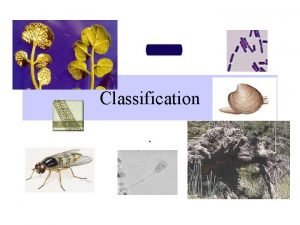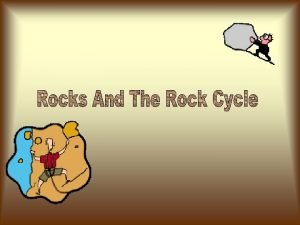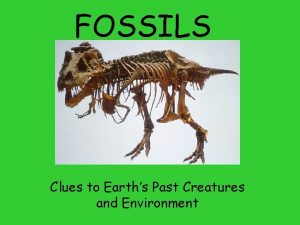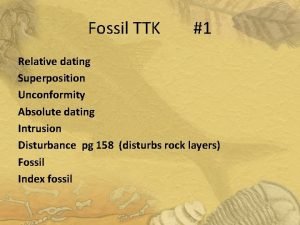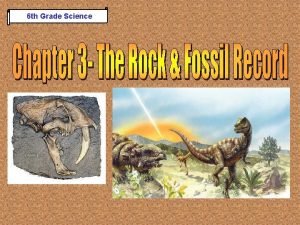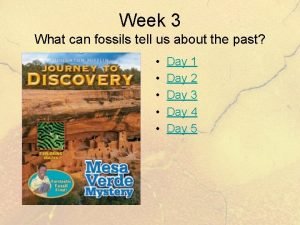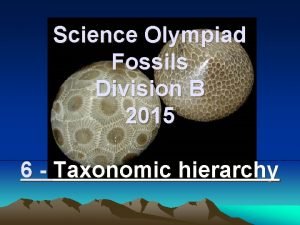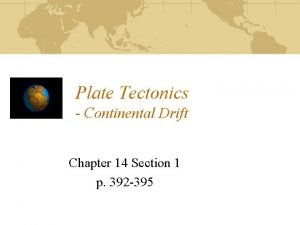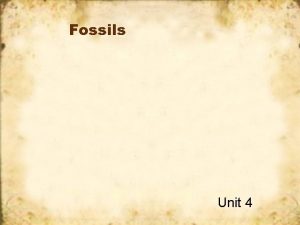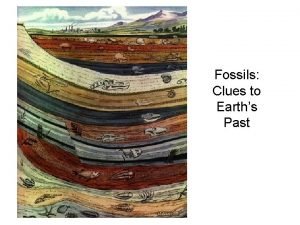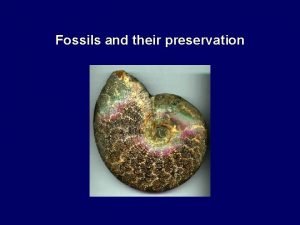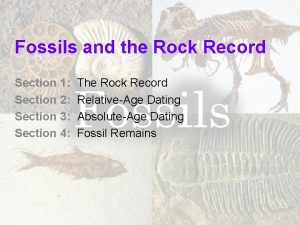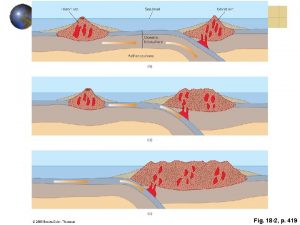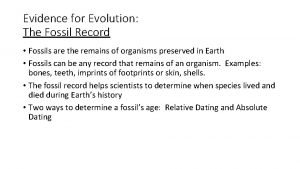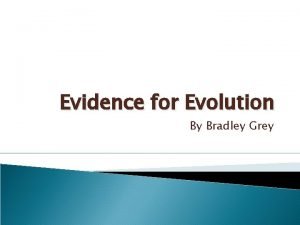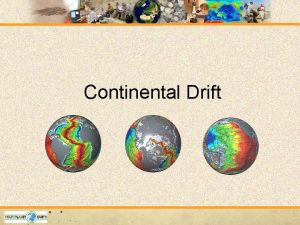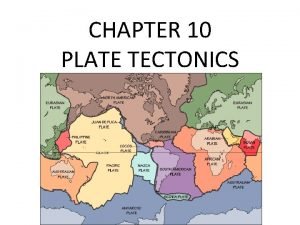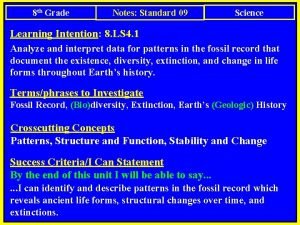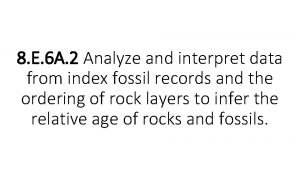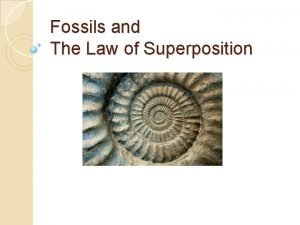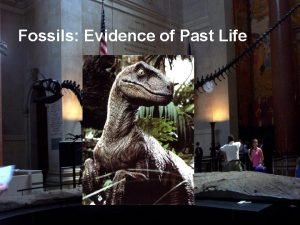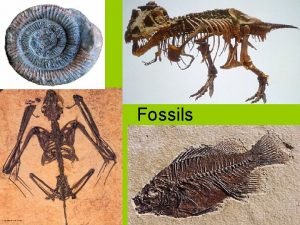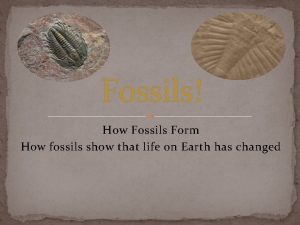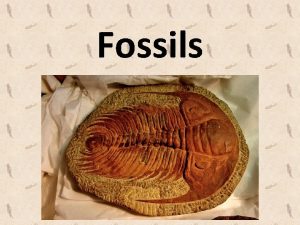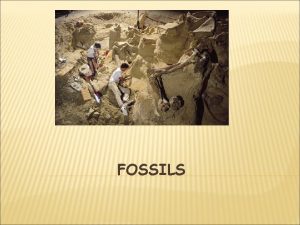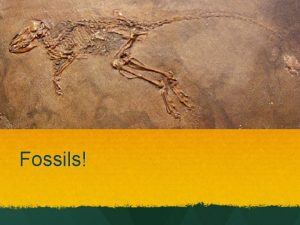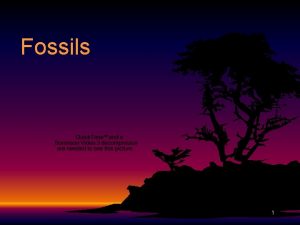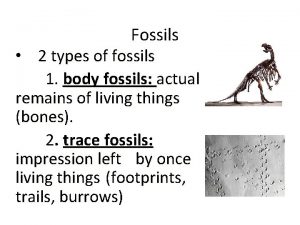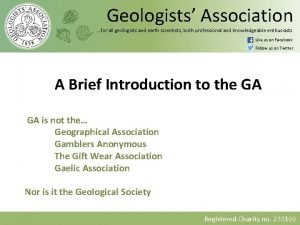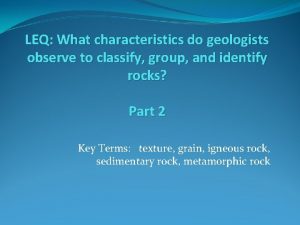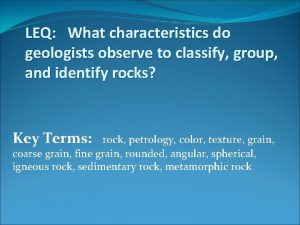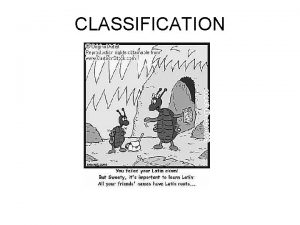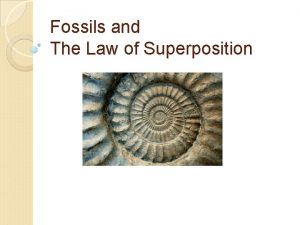FOSSILS IDENTIFICATION AND CLASSIFICATION Linnean Classification Geologists classify







































- Slides: 39

FOSSILS IDENTIFICATION AND CLASSIFICATION

Linnean Classification • Geologists classify fossils using the same classification for living things: • Kingdom, Phylum, Class, Order, Family Genus Species

We will learn the following Kingdoms: • • Archeobacteria Eubacteria Plants Animals

Kingdom Archaebacteria (Archaea) http: //www. ucmp. berkeley. edu/a rchaea/archaeafr. html These organisms are too tiny to see. They are the most ancient of all kingdoms. They are single celled and have no nucleus (prokaryotes) They like extreme environments – salty water hot water.

Kingdom Eubacteria • • • http: //www. ucmp. berkeley. edu /bacteriafr. html These organisms are also single celled and do not have a cell nucleus (prokaryotes) Some are photosynthetic The picture to the far right shows a “stromatolite” also known as an “algal mat’. These fossils are common in the Precambrian and still form today

Kingdom Protista These organisms are single celled and do contain a cell nucleus (eukaryotes) These are commonly planktonic organisms. Some form shells and are therefore commonly fossilized, but require a microscope

Kingdom Plantae • These organisms are multicellular and contain a cell nucleus (eukaryotes) • They lack hard parts (except pollen) and are therefore fossilized under special conditions only (often as carbon films or replaced (aka petrified) • The following slides outline the common groups (phyla or divisions) of plants

Kingdom Plantae – primitive plants • http: //biology. clc. uc. edu/courses/bio 106/ mosses. htm

Phylum Bryophyta -mosses liverworts

Phylum Lycopoda • http: //www. devonian times. org/who/pages /lycopsid. html

Phylum Sphenophyta (Sphenopsids) Today horsetails and scouring rushes

Phylum Filicinophyta § ferns

Phylum Gymnospermae Naked seed plants: -Seed ferns, cycads, conifers

Phylum Angiospermae Flowering plants


Kingdom Fungii

Kingdom Animalia The most common fossil. These are multicelluar, have a cell nucleus (eukaryotes)a nd are heterotrophs. The following slides review different phyla of animals.

• • These are the most primitive animal. Their spicules and mounds are found fossilized, but are difficult for the beginner to identify They are common from the late Precambrian until today. Porifera •

Cnidaria -These organisms have a sac-like body with tentacles. -They include jellyfish, anenomes and coral. -Coral secrete a calcite housing and so are common fossils -The next slide shows the different types of coral.

Cnidaria -coral The coral below are tablulate coral. They lack “theca” ( the lines That go into the middle. They are colonial. They are common in the Paleozoic The coral above are hexacoral. They are colonial, have six fold symmetry and “theca”. They are common Cenozoic and late Mesozoic fossils The coral to the right is a rugose or horn coral. It has theca, four fold symmetry and is solitary.

Platymorpha - flat worms Not commonly fossilized

Arthropods -These organisms have a segmented body, a head, eyes and an exoskeleton. -They include insects, spiders, crustaceans and trilobites. Trilobites are common Paleozoic fossils.

Annelids – segmented worms – not common fossils

Brachiopods These organisms belong to the lophophorates. They have two shells that hinge and remind some of a bivalve (clam). BUT THEY ARE NOT RELATED! § § Notice they have bilateral symmetry (clams are not) Common in the Paleozoic

Bryozoans These organisms belong to the lophophorates. They can live as lacy or stick like colonies or encrusting. ) They look like coral, but ARE NOT RELATED. They are common late Paleozoic Fossils

Mollusca - very diverse group many with shells. The following slides will show the CLASSes of Mollusca (shown below)

Gastropods Because they have shells they are common fossils. They are common Mesozoic and Cenozoic fossils. aka snails. If they have shells, they are spiraled in a helix

Cephalopods Includes octopi and squid and the nautilus today. In the Paleozoic and Mesozoic, shelled cephalopods were common. Their shells are chambered with walls between them. Some shells are straight and some coiled. If coiled, it is in a flat plane. The “suture pattern formed by the walls evolved to be more complex with time. See the diagram to the right:

Bivalves have two shells attached by a hinge. They are common Mesozoic and Cenozoic fossils. Unlike Brachiopods they often, they break open when they die and are NOT BILATERALLY SYMMETRIC

Echinoderms have “spiny skin” and 5 fold symmetry. Today and in the Cenozoic and Mesozoic, mobile forms such as shown on this page are/were common. Stalked Echinoderms (sessile forms) were very common in the late Paleozoic. These are shown on the next page.

Echinoderms - crinoids To the left you can see a diagram of what these looked like. The picture on the lower right shows a living crinoid. They are often called “sea lilies” (but are not plants). -When they die, the plates of calcite covering their bodies broke apart. The fossil to the upper right is rare. -Most often we find the columnals shown on the lower left.

Phylum Chordata Subphylum Vertebrata (animals with a dorsal nerve chord and a backbone) The diagram below shows the different groups. Tetrapods include amphibians, reptiles, birds and mammals

Jawless fish (aka Agnatha)

Placoderms – common Devonian Fish

Chondrichthyes - sharks, skates and rays. These have cartilagenous skeletons. Their “teeth” are common fossils. They have been around since the Devonian Period.

Acanthodonts – another common Devonian fish

Osteichthyes § Bony fish Ray finned Lobe finned – some of these give rise to amphibians in the Devonian (See Tiktaalik to the right. Tiktaalik is a half fish and half amphibian.

Tetrapods § Amphibians – Devonian to Recent § Reptiles – Pennsylvanian to Recent § Birds – Jurassic to Recent § Mammals Triassic - Recent

Check out these sites for more pictures of fossils: • http: //wwwgeology. ucdavis. edu/~cowen/historyoflife/i nvertebratesimages. html • http: //www. paleoportal. org/ • http: //www. palaeos. com/ • http: //www. ucmp. berkeley. edu/exhibits/hist oryoflife. php
 Linnaeus classification
Linnaeus classification Linnaeus classification system
Linnaeus classification system What are index fossils
What are index fossils Central pocket whorl vs plain whorl
Central pocket whorl vs plain whorl To study a rock sample geologists observe
To study a rock sample geologists observe The term geologists use for underground water is
The term geologists use for underground water is The term geologists use for underground water is
The term geologists use for underground water is How do geologists study direct evidence of earth's interior
How do geologists study direct evidence of earth's interior Earth's interior
Earth's interior What is the difference between mold and cast fossils?
What is the difference between mold and cast fossils? Principle of superposition
Principle of superposition Chapter 21 fossils and the rock record answer key
Chapter 21 fossils and the rock record answer key Relative dating
Relative dating What do fossils tell us about the past
What do fossils tell us about the past Fossils science olympiad
Fossils science olympiad Similar fossils found on different continents
Similar fossils found on different continents Horse evolution fossils
Horse evolution fossils Dinopoopicus
Dinopoopicus Filey brigg fossils
Filey brigg fossils How fossils are formed
How fossils are formed What do fossils tell us about the past
What do fossils tell us about the past Clues to earth's past
Clues to earth's past What do fossils tell us about the past
What do fossils tell us about the past Tar impregnation fossils
Tar impregnation fossils Mold fossil
Mold fossil Tar impregnation fossils
Tar impregnation fossils Fossils as evidence of continental drift
Fossils as evidence of continental drift How are unaltered fossils formed
How are unaltered fossils formed Evidence of fossil record
Evidence of fossil record Transitional fossils
Transitional fossils How fossils are dated
How fossils are dated Similar fossils found on different continents
Similar fossils found on different continents Chapter 10 plate tectonics
Chapter 10 plate tectonics Perserved fossils
Perserved fossils Types of fossils
Types of fossils Mold fossil
Mold fossil Fossils types
Fossils types Far-flung fossils activity answer key
Far-flung fossils activity answer key Questions about fossils
Questions about fossils Superposition fossils
Superposition fossils

